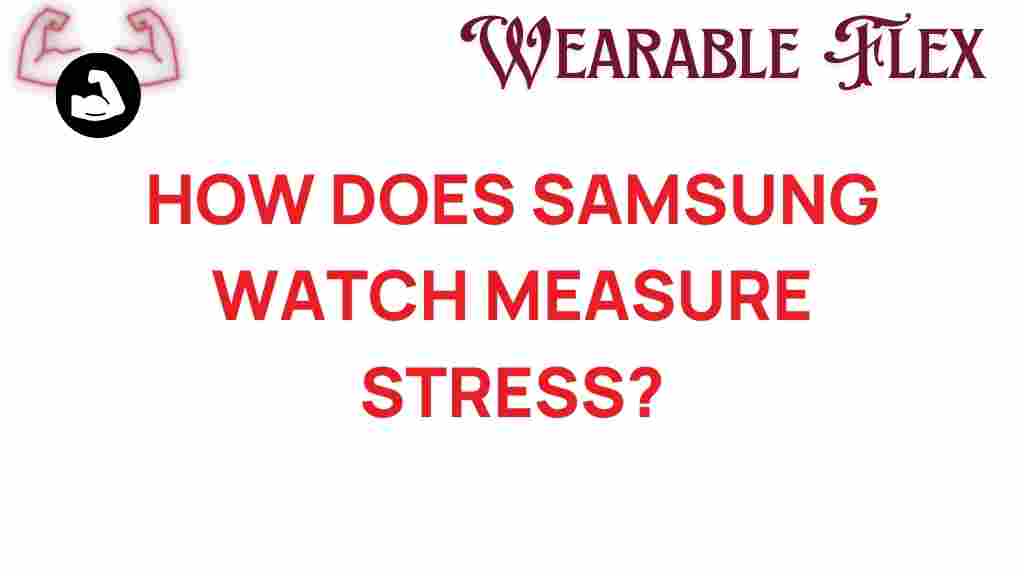Unraveling the Secrets: How Does Samsung Watch Measure Stress?
In today’s fast-paced world, stress management is more important than ever. With the rise of wearable technology, individuals now have access to various tools that can help them monitor their health and well-being. Among these devices, the Samsung Watch stands out with its ability to measure stress levels. In this article, we will delve into how the Samsung Watch measures stress, the technology behind it, and tips for making the most of this feature.
Understanding Stress Measurement on the Samsung Watch
The Samsung Watch utilizes several advanced technologies to provide insights into your stress levels. Here’s how it works:
1. Heart Rate Monitoring
One of the primary ways the Samsung Watch measures stress is through heart rate monitoring. Stress can cause an increase in heart rate, and the watch continuously tracks your pulse. Here’s how it functions:
- Optical Sensors: The watch uses photoplethysmography (PPG) sensors to detect blood flow through your wrist, measuring heartbeats accurately.
- Continuous Monitoring: It monitors your heart rate throughout the day, providing real-time data on your stress levels.
2. Stress Level Algorithm
The Samsung Watch employs a specific algorithm that interprets heart rate variability (HRV) to assess stress. HRV refers to the variation in time intervals between heartbeats. A lower HRV often indicates higher stress levels. The algorithm processes this data and categorizes stress levels as:
- Low Stress
- Moderate Stress
- High Stress
3. Breathing Exercises
To help users manage their stress, the Samsung Watch also includes guided breathing exercises. These exercises are designed to promote relaxation and mindfulness. Here’s how to access them:
- Open the Samsung Health app on your watch.
- Select the “Stress” option.
- Follow the prompts to engage in breathing exercises.
Step-by-Step Process to Measure Stress on Your Samsung Watch
Measuring stress with the Samsung Watch is simple and user-friendly. Follow these steps to check your stress levels:
Step 1: Wear Your Samsung Watch Properly
Your watch should be snug but comfortable on your wrist. Ensure that the sensors are in contact with your skin for accurate readings.
Step 2: Open the Samsung Health App
Navigate to the Samsung Health app on your watch. This app is your central hub for tracking various health metrics, including stress.
Step 3: Select the Stress Option
Within the Samsung Health app, find and select the “Stress” option. The watch will begin monitoring your heart rate and analyzing your stress levels.
Step 4: Review Your Stress Levels
After a few moments, the watch will display your current stress level. You can also view historical data to see trends over time.
Step 5: Engage in Breathing Exercises (if needed)
If your stress level is high, consider following the guided breathing exercises available in the app to help reduce stress.
Troubleshooting Stress Measurement Issues
Issue 1: Inaccurate Readings
If you suspect that your stress readings are inaccurate, consider the following:
- Ensure Proper Fit: Make sure the watch is securely fitted on your wrist.
- Clean the Sensors: Dirt or sweat can obstruct the sensors, leading to inaccurate readings.
- Update Software: Ensure your watch is running the latest software version for optimal performance.
Issue 2: App Not Responding
If the Samsung Health app is unresponsive:
- Restart the Watch: Sometimes a simple restart can resolve app glitches.
- Reinstall the App: If issues persist, try uninstalling and reinstalling the Samsung Health app.
Issue 3: Battery Drain
Frequent monitoring can drain your battery. To manage battery life:
- Adjust Settings: Limit the frequency of heart rate monitoring.
- Use Power Saving Mode: Activate power-saving features when the watch is not in use.
Benefits of Monitoring Stress with Samsung Watch
Using the Samsung Watch to monitor stress offers several benefits:
- Awareness: Being aware of your stress levels can help you take proactive steps to manage your health.
- Customized Recommendations: The watch provides personalized suggestions based on your data.
- Integration with Other Health Metrics: Stress monitoring can be combined with other health data, such as sleep patterns and activity levels, for a holistic view of your well-being.
Conclusion
The Samsung Watch is not merely a timepiece but a powerful tool for health management, particularly stress measurement. With its advanced heart rate monitoring, stress level algorithm, and guided breathing exercises, users can gain valuable insights into their well-being. By understanding how to effectively measure stress and troubleshoot any potential issues, you can make the most of your Samsung Watch. Embrace the future of health monitoring and take control of your stress levels today!
For more information on health tracking devices, you can visit this page. To explore more about Samsung products, check out their official website here.
This article is in the category Health and created by WearableFlex Team
